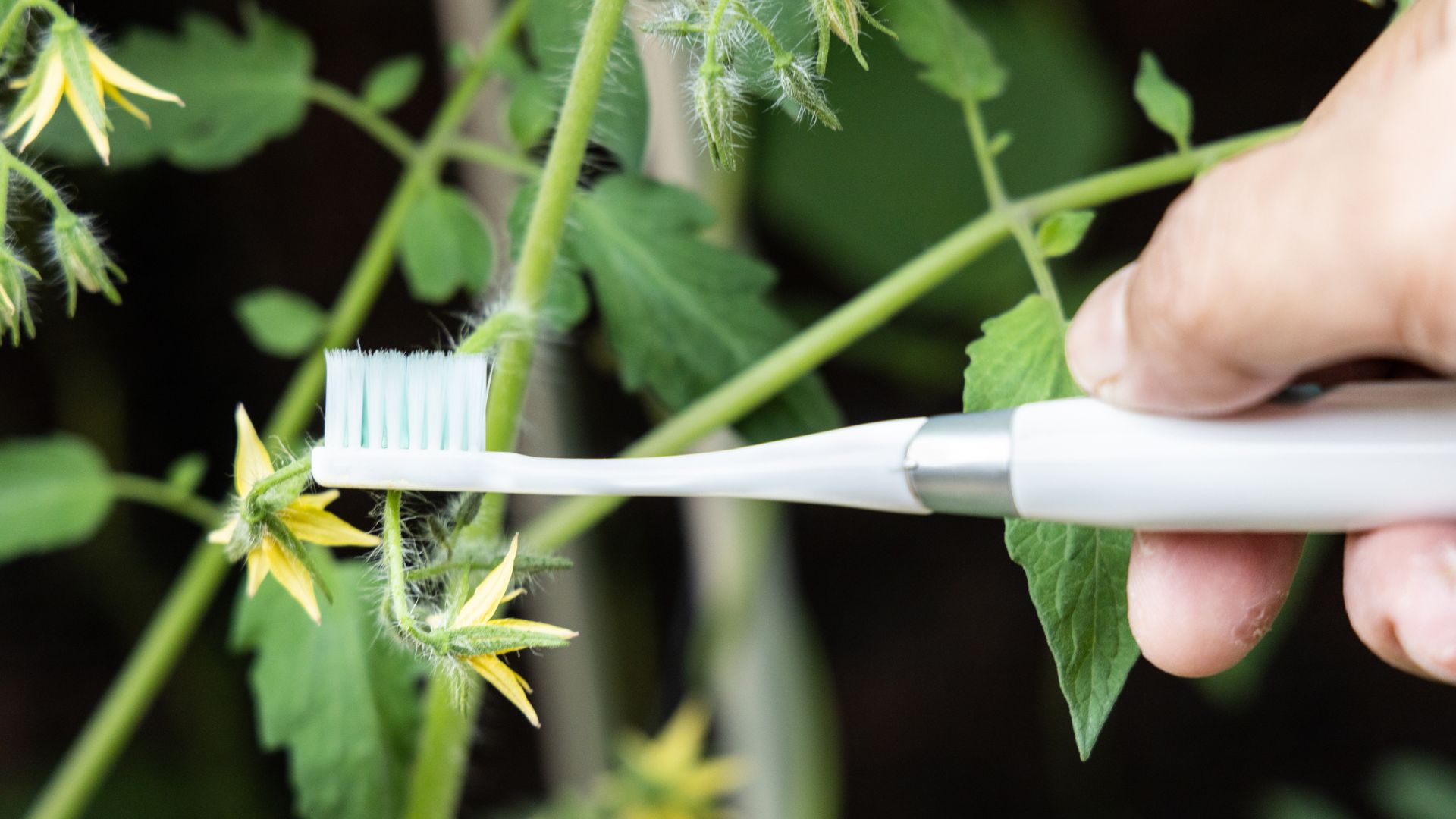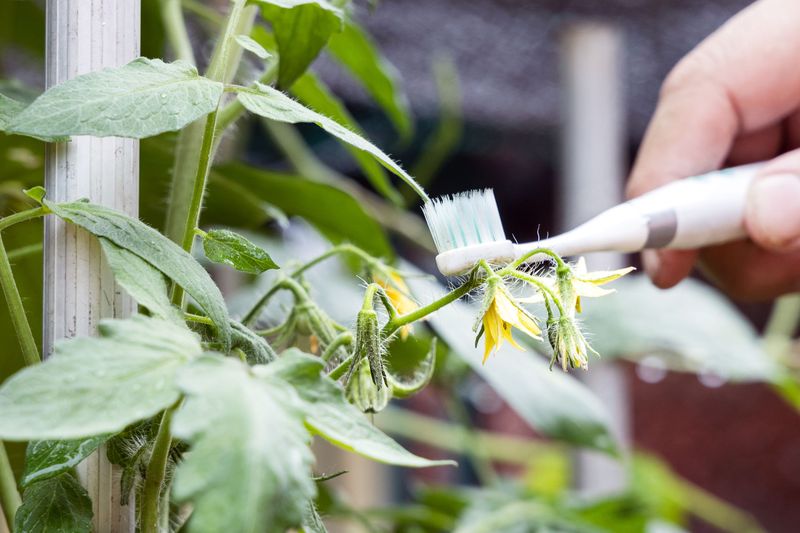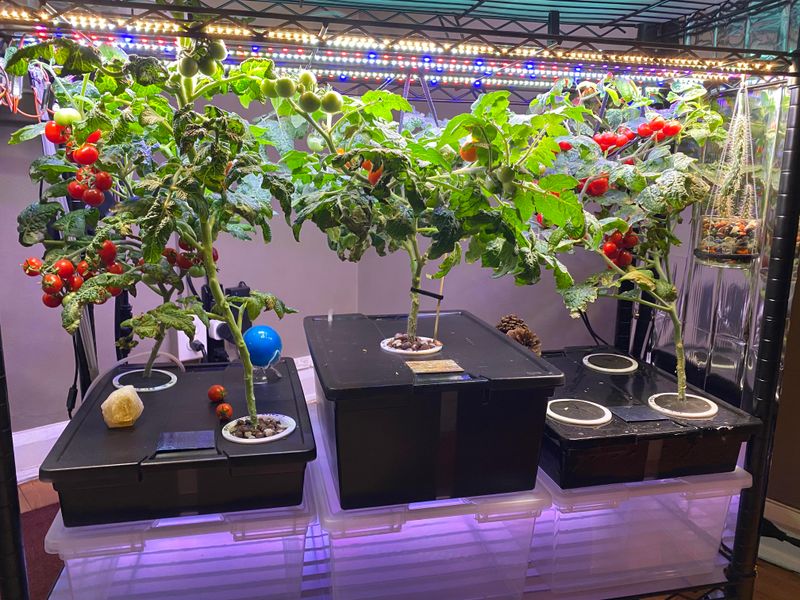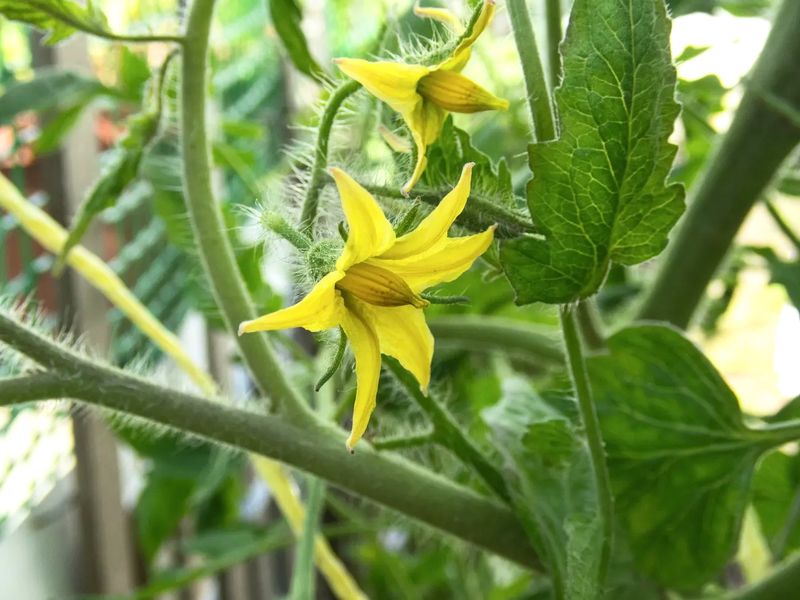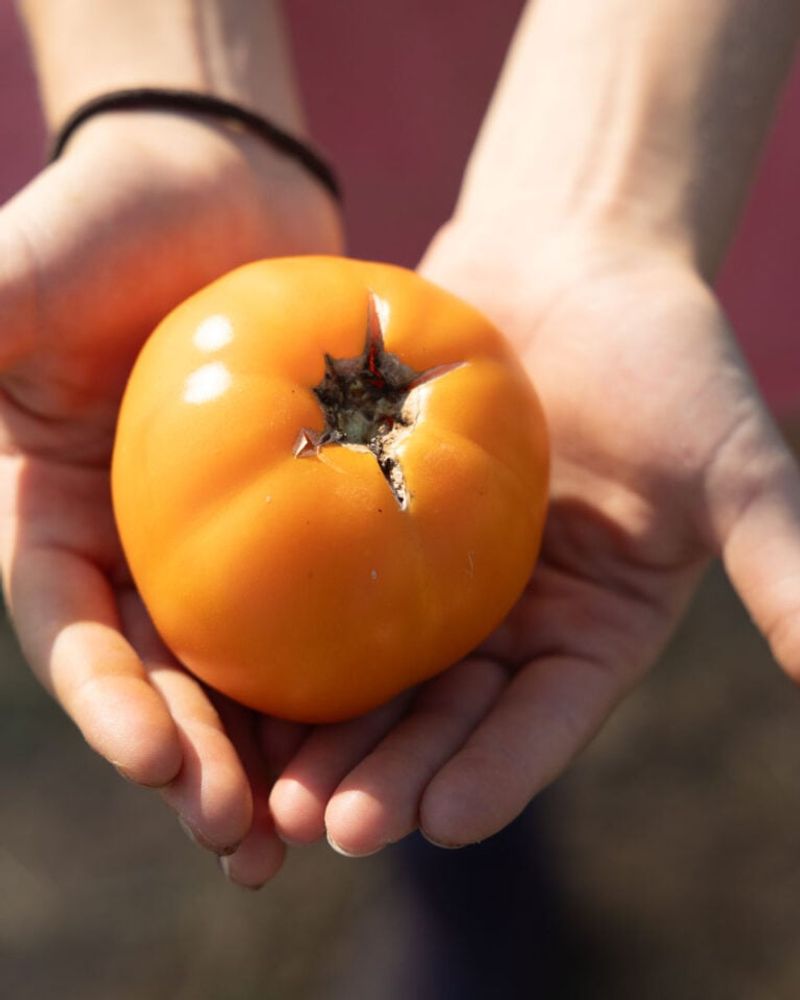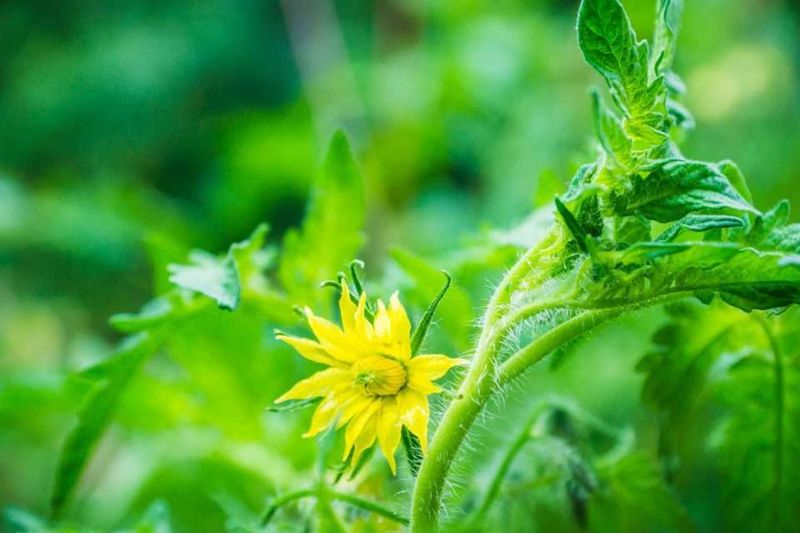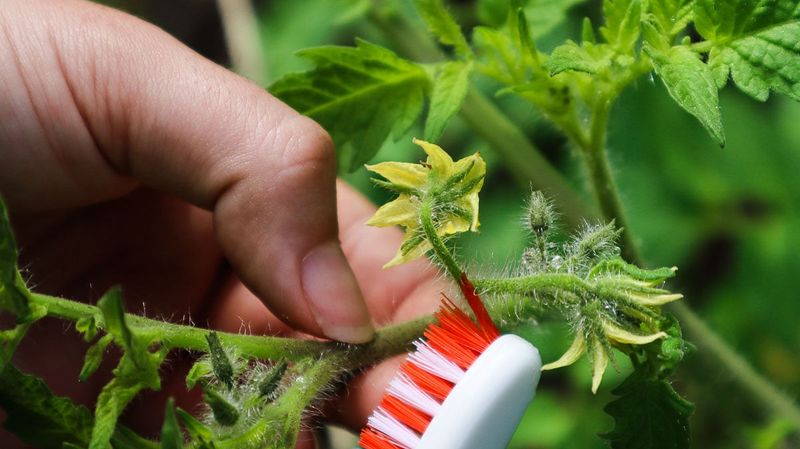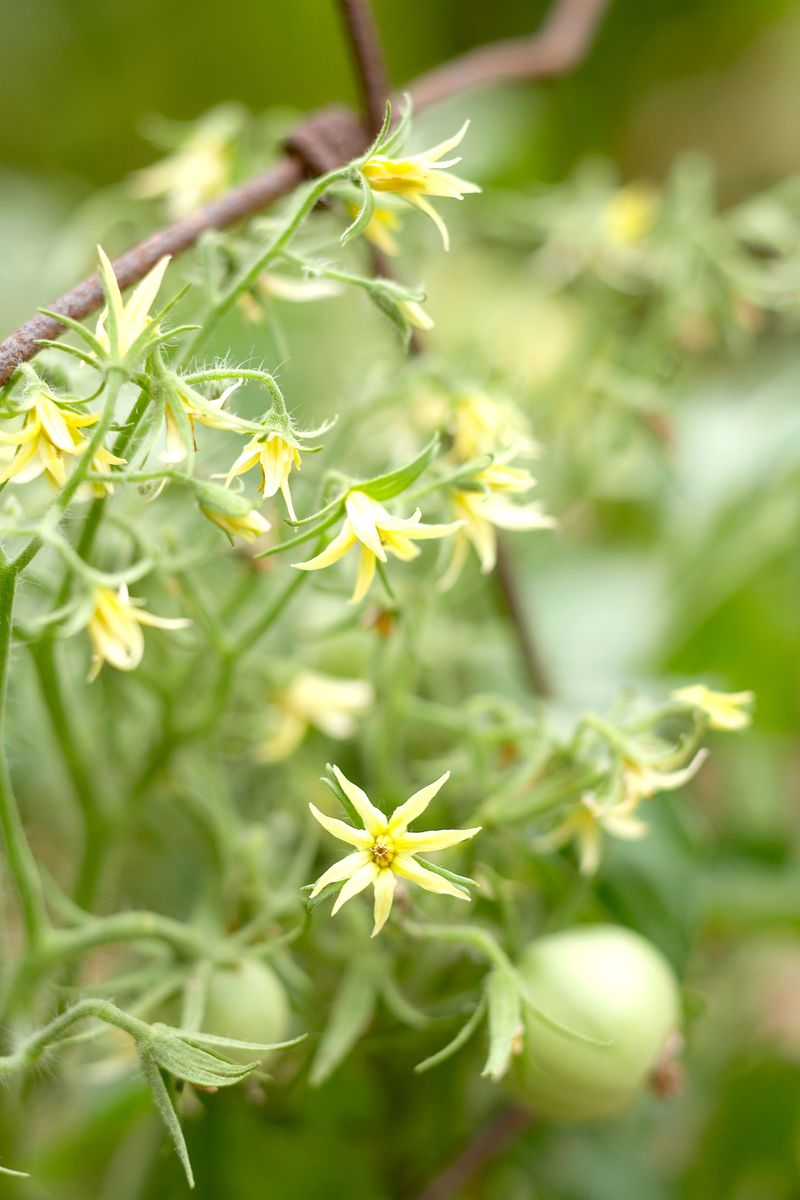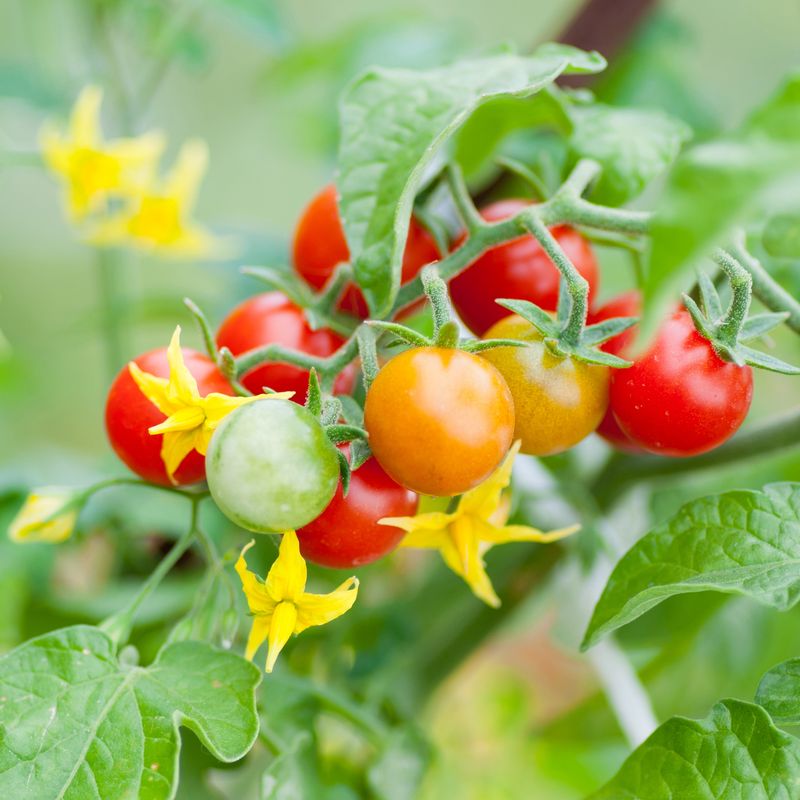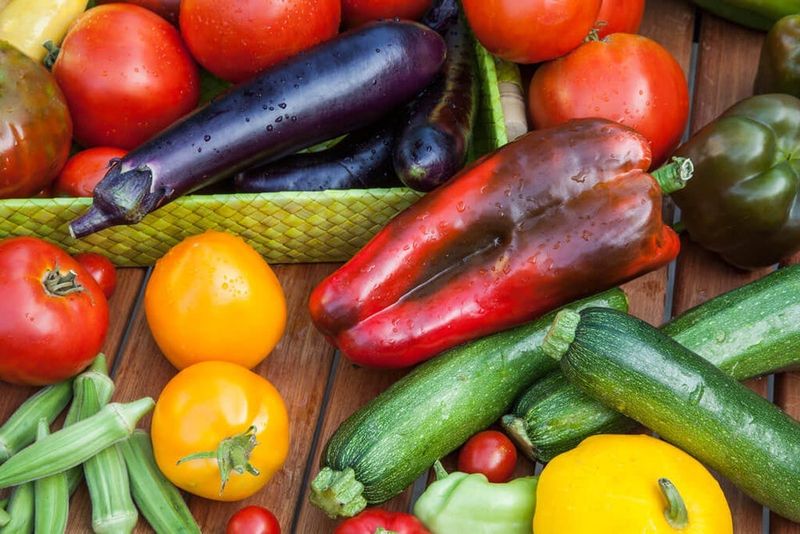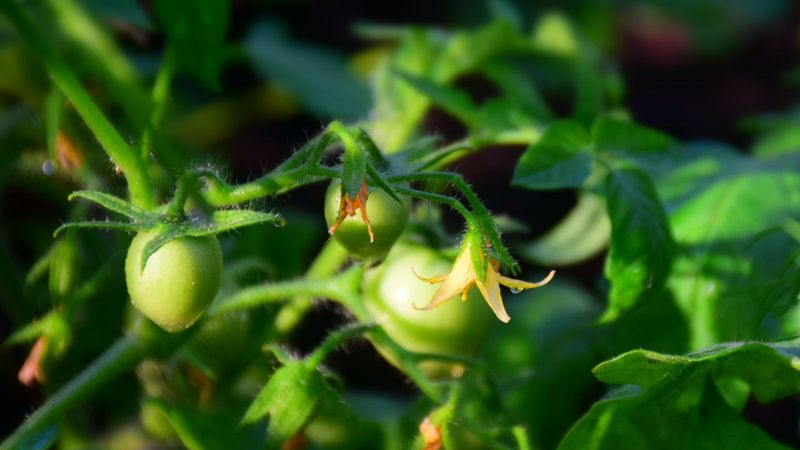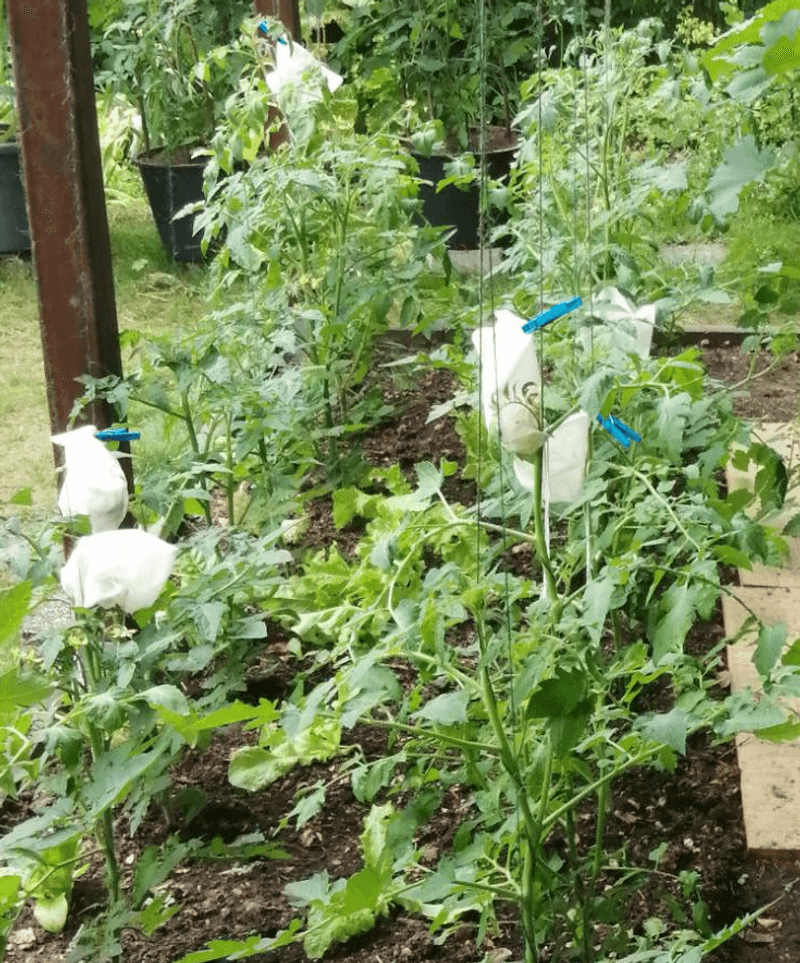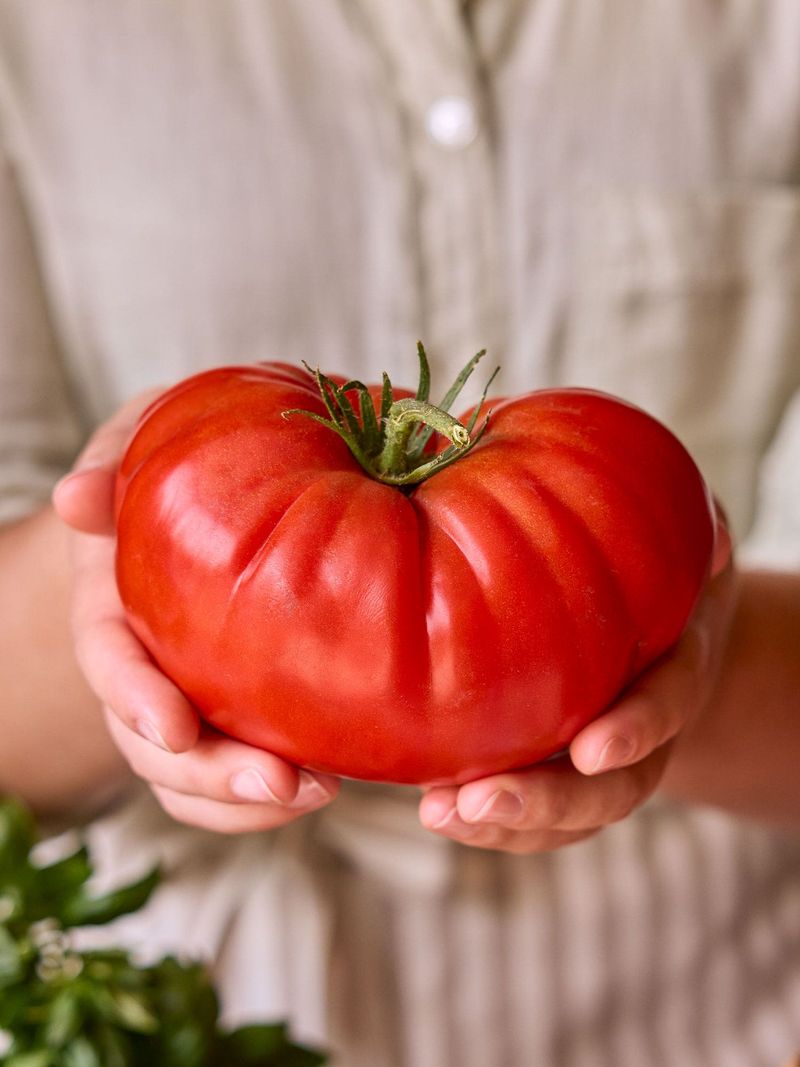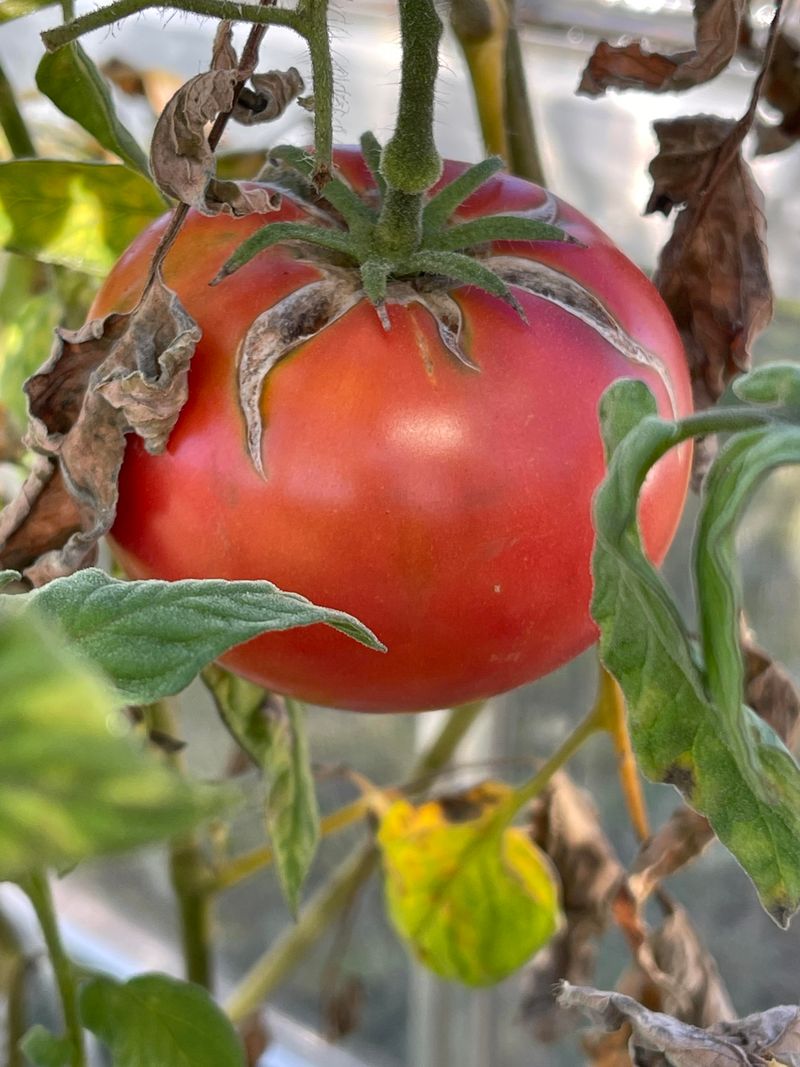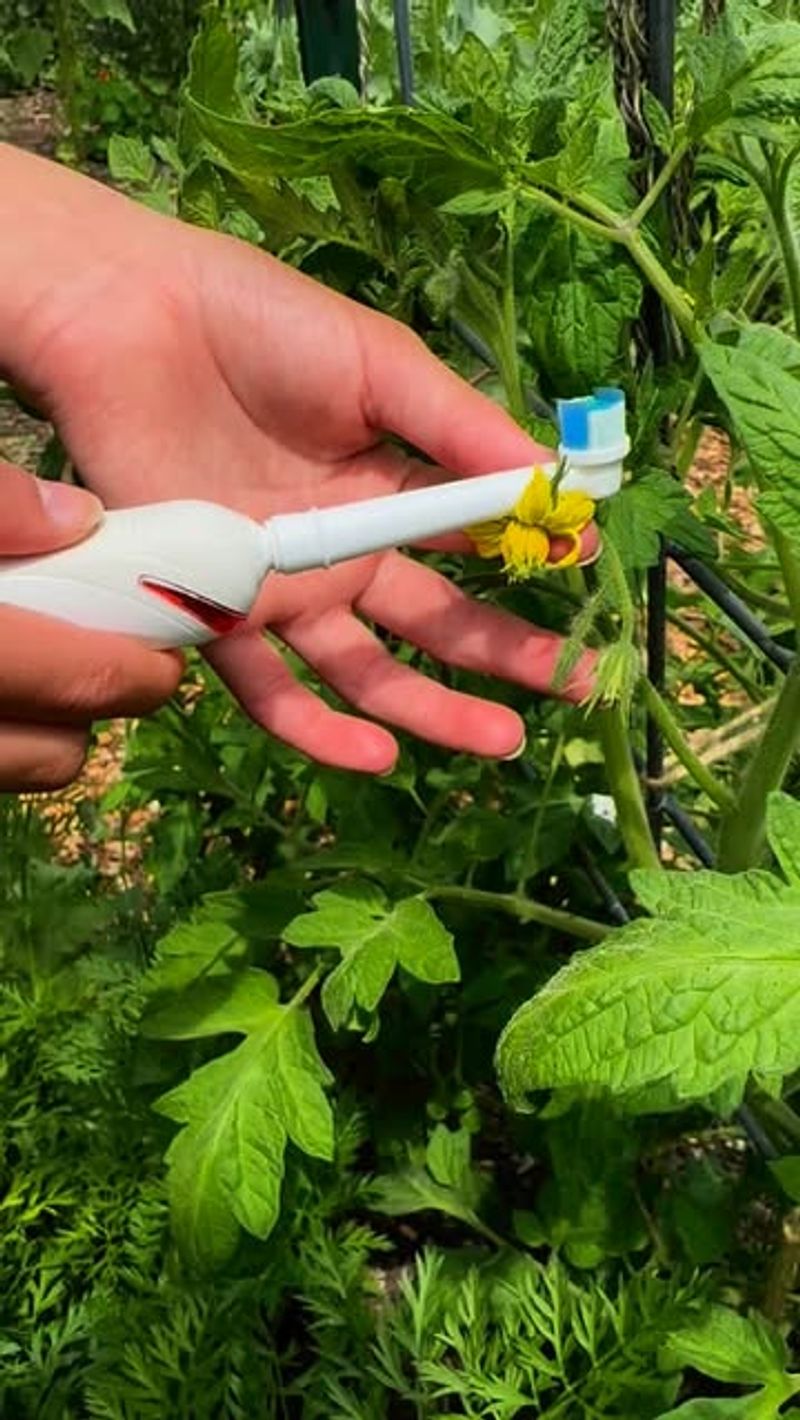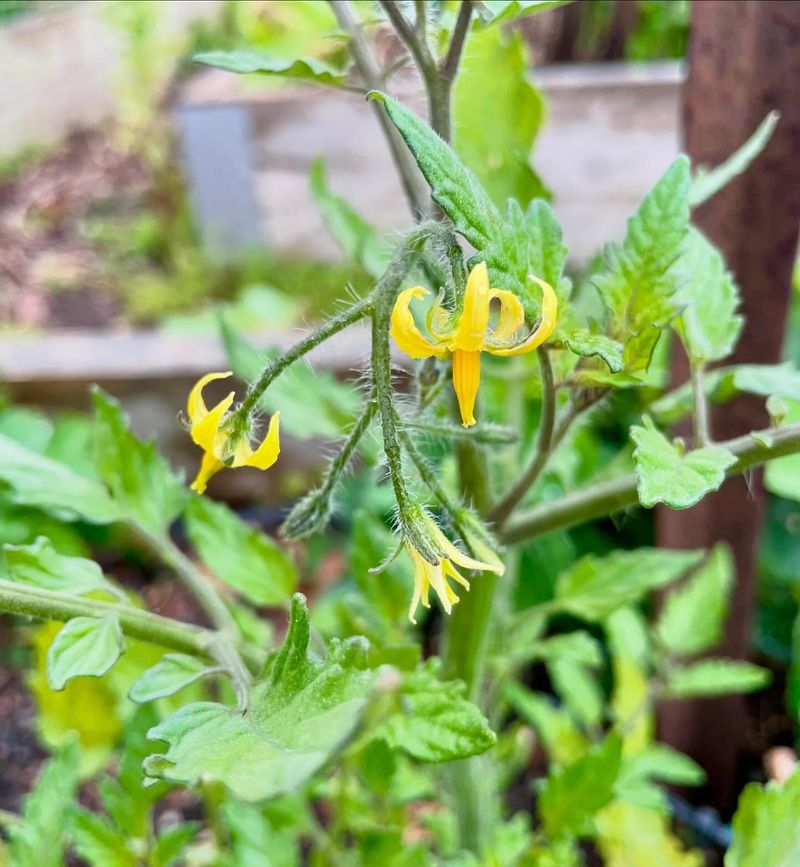I’ll admit, the first time I saw someone using an electric toothbrush on their tomato plants, I thought they’d lost it. But once I tried it myself, I was hooked.
It turns out this little gadget does a great job mimicking buzzing bees and shaking loose pollen. It’s especially helpful on still days or in gardens where bees are few and far between.
With just a few minutes of buzzing, you can boost fruit set and enjoy a healthier, more productive harvest without relying solely on nature’s pollinators.
1. Mimics Natural Bee Vibration
The gentle buzzing of an electric toothbrush creates the same frequency as a bee’s wings, causing a phenomenon called ‘buzz pollination.’ This natural process is something certain plants have evolved to respond to over millions of years.
When the toothbrush touches the flower stem, pollen shakes loose from the male parts and lands precisely where it needs to on the female parts. It’s particularly effective for plants in the nightshade family.
For gardeners in regions with declining bee populations, this method provides a reliable backup system that works regardless of local pollinator populations.
2. Works During Poor Weather Conditions
Rain, wind, and cold temperatures often keep bees and other pollinators away when plants are flowering. The toothbrush technique gives you control over the timing regardless of what Mother Nature throws your way.
Morning dew? No problem. Cloudy day? Still works perfectly. This weather independence means you can ensure pollination happens during the critical window when flowers are most receptive.
Many gardeners report this method saved their crops during unusually rainy springs when natural pollinators simply couldn’t visit flowers frequently enough.
3. Increases Early Season Fruit Set
Getting those first fruits to develop can be challenging, especially when temperatures fluctuate in spring. The toothbrush trick helps overcome this hurdle by ensuring adequate pollination when it matters most.
Early fruit development triggers hormonal changes that promote more flowering and fruiting throughout the season. Think of it as jumpstarting the plant’s reproductive cycle when conditions might not be ideal.
By securing that first wave of fruits, you’re essentially extending your growing season by weeks on the front end, which can mean significantly higher yields by season’s end.
4. Perfect For Indoor And Container Plants
Plants growing indoors or on balconies miss out on visits from natural pollinators. The toothbrush technique bridges this gap perfectly for urban gardeners or those growing in enclosed spaces.
Container plants often produce smaller harvests due to pollination challenges, not because of their restricted root space. Regular toothbrush sessions can help these plants reach their full productive potential despite their isolation from nature.
Many apartment dwellers have transformed disappointing container gardens into productive mini-farms simply by adding this five-second task to their morning routine.
5. Reduces Flower Drop
Nothing frustrates gardeners more than watching healthy flowers fall off without forming fruit. This common problem often results from incomplete pollination rather than any plant disease or nutrient deficiency.
The vibration from a toothbrush ensures pollen reaches the stigma effectively, dramatically reducing the number of flowers that drop without setting fruit. You’ll notice fewer yellow blossoms on the ground beneath your plants.
Some gardeners report keeping track of their results, finding that hand-pollinated trusses retain up to 90% of their flowers while unpollinated ones might keep only 30-40%.
6. Creates More Uniform Fruit Shape
Ever noticed how some fruits grow lopsided or have strange shapes? That’s often because only part of the flower received adequate pollination. The toothbrush method ensures thorough pollen distribution.
When all sections of the flower receive pollen, the resulting fruit develops more symmetrically. This is especially noticeable with larger varieties that tend toward irregular shapes when left to chance pollination.
Beyond just aesthetics, evenly formed fruits often ripen more consistently and have fewer issues with rot or disease since there are no underdeveloped sections.
7. Boosts Overall Yield Significantly
The numbers don’t lie – consistent use of the toothbrush technique can increase harvests by 20-30% in most gardens. This happens because more flowers successfully transform into fruit instead of dropping prematurely.
Even experienced gardeners are often surprised by how dramatically this simple technique affects their harvest totals. The difference becomes especially apparent during challenging growing seasons when natural pollination is compromised.
For families growing food to eat, this yield increase can mean dozens of extra pounds of produce from the same number of plants and garden space.
8. Extends The Pollination Window
Flowers remain receptive to pollination for only a limited time – typically 1-3 days depending on conditions. Missing this window means missed fruit, but the toothbrush gives you control over timing.
Many gardeners simply incorporate a quick pollination session into their morning garden routine. This consistency ensures no flower goes unpollinated during its receptive period, regardless of when pollinators are active.
The technique proves especially valuable during heat waves when pollen becomes less viable by midday, allowing you to pollinate during the cool morning hours when success rates are highest.
9. Improves Cross-Pollination Between Varieties
Growing multiple varieties? The toothbrush can help create interesting crosses if you’re saving seeds. By deliberately transferring pollen between different plant varieties, you can encourage genetic diversity.
Seed savers particularly appreciate this level of control when working with heirloom varieties they want to maintain or selectively cross. The precision of the toothbrush makes it possible to target specific flowers.
Some gardeners even use different colored toothbrushes to keep track of which varieties they’ve crossed, creating a simple system for their breeding experiments.
10. Reduces Dependency On Chemical Fruit Set Hormones
Commercial growers often spray synthetic hormones to force fruit development when pollination is inadequate. The toothbrush technique offers a completely natural alternative that works just as effectively.
These plant-safe vibrations trigger the same hormonal responses within the plant that chemical sprays attempt to mimic, but without introducing any synthetic compounds to your garden.
For organic gardeners committed to chemical-free growing, this method aligns perfectly with sustainable principles while still maximizing production.
11. Works On Multiple Garden Vegetables
While we often focus on tomatoes, this technique works wonders on peppers, eggplants, and other members of the nightshade family that benefit from buzz pollination. Each of these plants has evolved similar flower structures.
Expanding your pollination routine to include these other crops can transform your entire vegetable garden’s productivity. The same toothbrush can be used across different plant types.
Even some plants that don’t strictly require buzz pollination, like strawberries and blueberries, show improved fruit set when given a gentle vibration during their flowering period.
12. Provides Valuable Feedback About Plant Health
The pollination process becomes a daily check-in with your plants. When you’re up close examining flowers, you’ll spot pest problems, diseases, and nutrient deficiencies before they become serious.
Healthy flowers release pollen easily when vibrated, while stressed plants often produce less viable pollen. This observation can alert you to underlying issues before visible symptoms appear elsewhere on the plant.
Many experienced gardeners can judge their soil fertility and plant health simply by observing how readily pollen releases during their morning pollination routine.
13. Perfect Solution For Greenhouse Growing
Enclosed greenhouses often lack natural pollinators, creating a significant challenge for growers. The toothbrush method solves this problem elegantly without requiring the introduction of bee colonies or other insects.
Commercial greenhouse operations have adopted versions of this technique using electric pollinating wands, which are essentially industrial-strength toothbrushes designed specifically for this purpose.
Home greenhouse enthusiasts find that a simple battery-operated toothbrush provides years of service at a fraction of the cost of specialized equipment.
14. Encourages Larger Fruit Size
Better pollination means more seeds develop within each fruit, which triggers the plant to direct more resources to that developing fruit. The result? Noticeably larger, more substantial harvests.
This size increase happens because fruits with more successfully fertilized seeds produce higher levels of growth hormones. These hormones signal the plant to send additional nutrients and water to support development.
Many gardeners report their hand-pollinated fruits weigh 15-25% more than those left to chance pollination, even on the same plant.
15. Saves Money On Failed Crops
When you consider the cost of seeds, soil, fertilizer, water, and time invested in growing, ensuring successful pollination becomes an economic issue. The toothbrush method protects your gardening investment.
A single toothbrush costs a few dollars but can help produce hundreds of dollars worth of additional vegetables over a season. The return on investment is remarkable for such a simple tool.
For market gardeners selling their produce, this technique directly impacts the bottom line by increasing marketable yields without additional growing space or inputs.
16. Creates A Meditative Gardening Ritual
Many gardeners find the daily practice of gently pollinating each flower becomes a peaceful, mindful activity. There’s something deeply satisfying about this intimate interaction with your plants.
The process requires just minutes each morning but creates a consistent connection to your garden’s development. You’ll notice subtle changes in the plants that might otherwise be missed.
Some gardeners report this morning ritual becomes their favorite part of the day – a quiet moment of purposeful activity before the rush of daily responsibilities begins.
17. Allows Precise Record-Keeping For Garden Experiments
For data-loving gardeners, the toothbrush method enables controlled experiments. You can pollinate specific trusses on certain days and track the results, learning exactly what works best in your unique growing conditions.
By tagging pollinated clusters with dates, you can determine optimal pollination timing for your climate. This knowledge compounds season after season, improving your gardening expertise.
Some gardeners keep detailed journals of their pollination efforts, creating valuable personal references about which varieties respond best to the technique and under what conditions.

